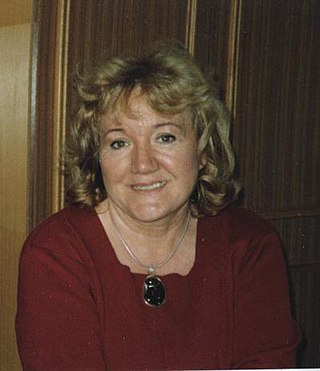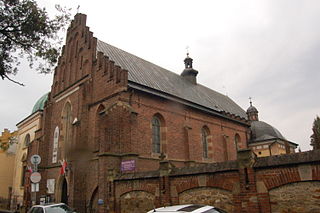
The Warsaw Ghetto was the largest of the Nazi ghettos during World War II and the Holocaust. It was established in November 1940 by the German authorities within the new General Government territory of occupied Poland. At its height, as many as 460,000 Jews were imprisoned there, in an area of 3.4 km2 (1.3 sq mi), with an average of 9.2 persons per room, barely subsisting on meager food rations. Jews were deported from the Warsaw Ghetto to Nazi concentration camps and mass-killing centers. In the summer of 1942, at least 254,000 ghetto residents were sent to the Treblinka extermination camp during Großaktion Warschau under the guise of "resettlement in the East" over the course of the summer. The ghetto was demolished by the Germans in May 1943 after the Warsaw Ghetto Uprising had temporarily halted the deportations. The total death toll among the prisoners of the ghetto is estimated to be at least 300,000 killed by bullet or gas, combined with 92,000 victims of starvation and related diseases, the Warsaw Ghetto Uprising, and the casualties of the final destruction of the ghetto.

Emanuel Ringelblum was a Polish historian, politician and social worker, known for his Notes from the Warsaw Ghetto, Notes on the Refugees in Zbąszyn chronicling the deportation of Jews from the town of Zbąszyń, and the so-called Ringelblum Archive of the Warsaw Ghetto.

Meir Balaban or Majer Samuel Bałaban was a historian of Polish and Galician Jews, and the founder of Polish Jewish historiography.

The Synagogue in Chachmei Lublin Yeshiva is a synagogue located in Lublin, Poland, in the building of Chachmei Lublin Yeshiva, on Lubartowska 85 Street.

The Jewish Historical Institute, also known as the Emanuel Ringelblum Jewish Historical Institute, is a public cultural and research institution in Warsaw, Poland, chiefly dealing with the history of Jews in Poland and Jewish culture.

Magdalena Tulli is a Polish novelist and translator, one of Poland's leading writers.

Georgia–Poland relations refers to foreign relations between Georgia and Poland. Both nations enjoy close and historically friendly relations, rooted in similar experiences, solidarity and shared struggles against foreign imperialism, especially that of Russia.

Alina Cała is a Polish writer, historian and sociologist. A former board member of the Jewish Historical Institute, she specialises in 19th and 20th century Polish-Jewish history, antisemitism and Jewish assimilation in Central and Eastern Europe.
Szymon Rudnicki is a Polish historian. He specializes in the history of the Second Polish Republic, right-wing political movements of that era, and Polish-Jewish relations.

Aleksandra Ziółkowska-Boehm is a Polish-born United States-based writer and academic. She obtained her Ph.D. in humanistic studies at the Warsaw University. Her works include historical biographies, the current outlook of Native Americans, autobiographical stories of her travels, Ingrid Bergman, and cats.
Józef Spors was a Polish historian, specializing in the medieval History of Poland and its northern region - Pomerania.

The Oświęcim Chapel, dedicated to the Blessed Virgin Mary and St. Stanislaus of Szczepanów, is an extension to the Gothic Franciscan Church in Krosno, Poland. Founded in 1647–1648 by a prominent representative of the Oświęcim family, it is also commonly known as the "Chapel of Love". Associated with the romantic legend of Stanisław Oświęcim's love for his sister Anna, the building is one of the finest artistic achievements of its era. It represents a type of early Baroque burial chapel built on a square plan, with a dome topped by a lantern inspired by the early Renaissance Sigismund's Chapel.

Lubomirski Palace is a palace in central Warsaw, which was built in the 18th century for the Radziwiłł family.

Jan Białostocki was a Polish historian. He is considered to be one of the most renowned Polish art historians of the 20th century.
Jolanta Maria Żyndul is a Polish historian, a specialist on modern Jewish history and Polish-Jewish relations in 19th and 20th century.

Stanisław Herbst was a Polish historian, researcher of modern history, and military historian. He was a professor at the University of Warsaw and the Dzerzhinsky Political-Military Academy in Warsaw, and was also the president of the Polish Historical Society. Pupils of his included Zdzisław Spieralski and Tomasz Strzembosz.
The Alfonse pogrom was a three-day riot in Warsaw, Poland. The violence led to the destruction of several dozen brothels, and to as many as 15 deaths. Accounts and analyses of the event differ with regard to its goals and participants.

Maria Dulębianka was a Polish artist and activist, notable for promoting women’s suffrage and higher education.

Regina Lilientalowa, born Gitla née Eiger; 24 November 1875 Zawichost — 4 December 1924, Warsaw). She was a Polish ethnographer, translator, and journalist of Jewish origin. She is known for her pioneering research on Jewish folk rituals and literature.














